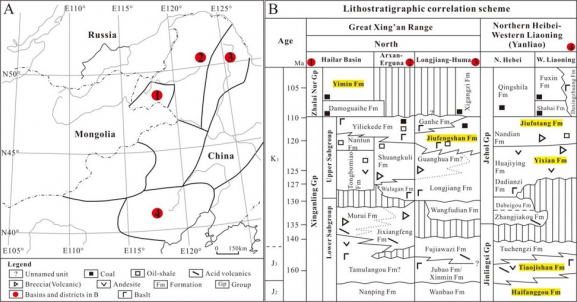 HKU Department of Earth Science
HKU Department of Earth Science
Seminar

Interdisciplinary investigations of the Jurassic and Cretaceous terrestrial ecosystems
-
Date
August 31,2023
-
Time
10:00AM
-
Venue
JL104
-
Speaker
Miss Yuling LI (Supervisor: Dr SC Chang) Department of Earth Sciences, HKU
The Mesozoic is a critical period in the Earth's history. It witnessed the biological recovery from the most severe mass extinction event, the first dinosaurs roomed, the first flower bloomed, and how life responded to large-scale tectonic activities. In this study, I combine stratigraphy, paleontology, and geochronology to study the two famous biotas and amber sites exposed to northern China's Jurassic and Cretaceous strata. I report two new amber sites from Inner Mongolia, northern China, summarize the Cretaceous amber deposits worldwide and review all the formally described Chinese amber localities. The age of the oldest known amber in China is presented based on radio-isotopic age and stratigraphic correlation. An updated review of the stratigraphy and the paleontology of three representative beds from the Yanliao area is presented. Two novel 40Ar/39Ar ages of 161.4 ± 0.8 Ma and 161.6 ± 0.6 Ma are obtained above salamander fossil-bearing beds in Reshuitang Village, Liaoning, China. The new data establish more precise and accurate age constraints on early salamander evolution and diversification. This study indicates that the Reshuitang fossil beds were deposited slightly later than the well-known Daohugou fossil beds in Inner Mongolia and somewhat earlier than the Linglongta fossil beds in western Liaoning. A Chronostratigraphic framework of the Yanliao Biota is refined by combining a review of previous geochronology with the new results and the biostratigraphic correlation. The Naketa fossil beds in eastern Inner Mongolia outcrop the Lower Cretaceous Jiufengshan Formation that contains the typical EEL fossils assemblages of the famous Jehol Biota. The fossil beds herein date to approximately 124-121 Ma (Barremian-earliest Aptian), which agrees with the biostratigraphic correlation. Biostratigraphic and geochronological correlations suggest that the Naketa beds document the middle and late phases of the Jehol Biota and correspond to the upper part of the Yixian to the lower part of the Jiufotang formations.
Additional information: Miss Yuling LI, yulingli@connect.hku.hk
